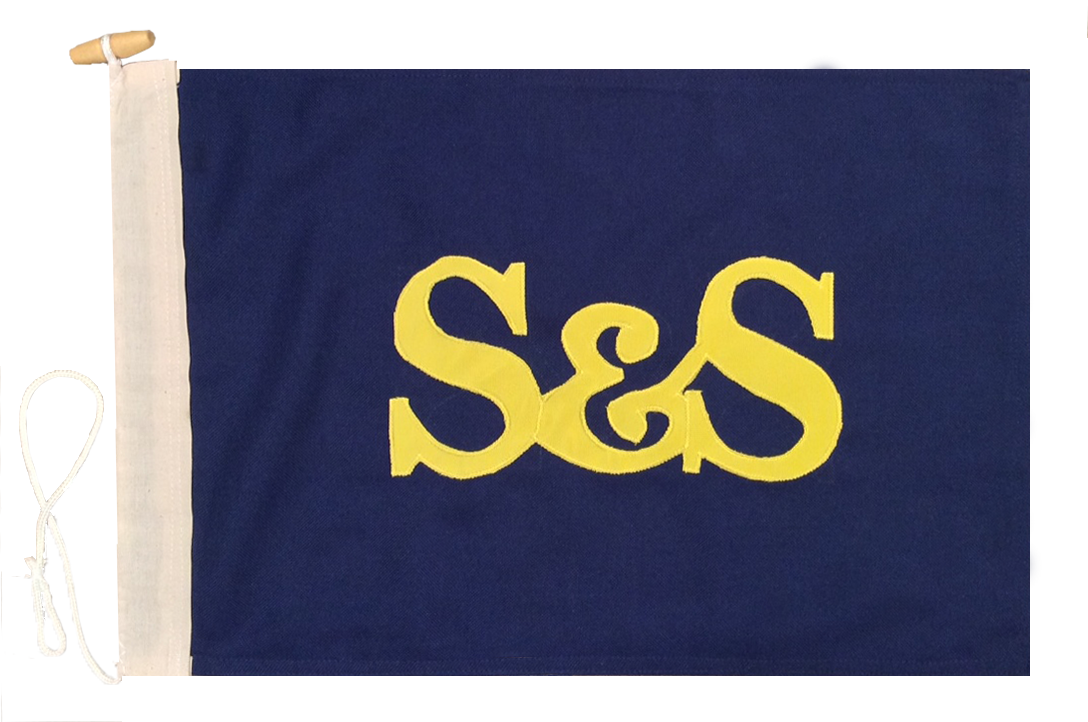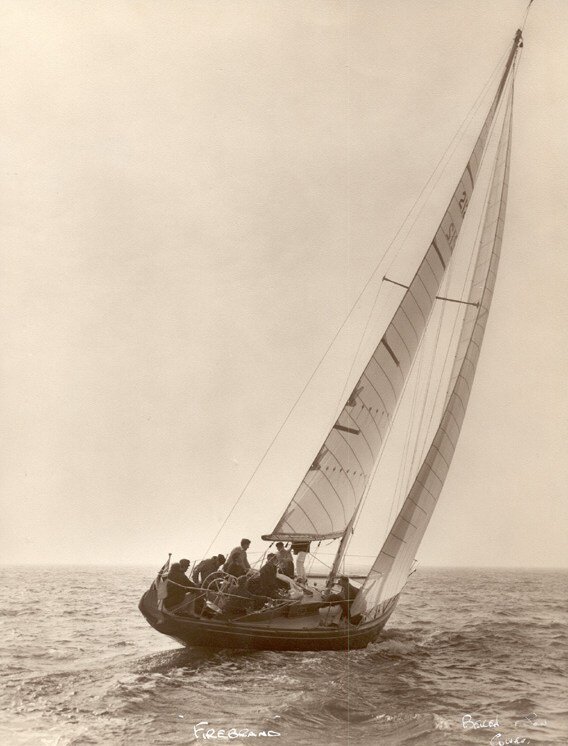FIREBRAND - Patrick Matthiesen
The Sparkman and Stephens designed FIREBRAND was built by Clare Lallow's yard in Cowes in 1964 for Denis Miller. Designed specifically for the RORC Rule and to be a member of the British Admiral's Cup team, she was intended as an out and out racing boat. She was built of the finest materials, with a teak main frame and centre line, teak garboards, mahogany planking and teak decks with bronze floors and reinforcements.
FIREBRAND - Copyright Beken of Cowes
At the time of her launch, it was remarked how similar she was to recent Nicholson designed team yachts in her deep-veed midships sections and fine ends. Her fine pinched-in stern followed classic British designs reaching back to before the war, but these were largely dictated by the RORC Rule and were quite different from the broader, slightly shorter counters prevalent on American yachts and favoured for their increased buoyancy. If one compares FIREBRAND with QUIVER VI, a contemporary Nicholson design for the Admiral's Cup team, one will see that the Sparkman and Stephens design has longer overhangs, while there is slightly less immersion of the counter. The bow profile, however, is somewhat similar.
This was the beginning of the abandonment of the spoon bow and the adoption of the modern straight raked bow, albeit with a hint of curvature. The sheer line to the bow is marked with high freeboard, allowing for an almost flush decked profile with a small doghouse. The bow is fine, the forefoot quite cut away below the forward water line, but the shape is still classic S & S equilateral triangle, and in this the American boats differed from many of the 50s and 60s British racing boats, such as those designed by Illingworth and Parker and Clark, which always had a pronounced toe to the keel profile.
FIREBRAND sports one of the contemporary CONSTELLATION style rudders rather than the classic rounded shape which had always been favoured in the past. The theory was that the wider chord of the rudder blade set deep provided better steering control downwind, and this form of rudder has generally been favoured ever since on full-keel profiles. FIREBRAND retains the classic aft raked counter.
FIREBRAND - Rudder
By 1962 a transition in design development was taking place which was to culminate in the fin keel and skeg rudder designs that began to appear from 1965 onwards and which reached their culmination (and perhaps the happiest compromise between classic form and modern shape) in the SWAN 43 of l968 (Design #1973). The full keel boats designed in the early 60s showed an increasing V-shaped section in the bows and sections forward of the mast with slack bilges and low wetted surface and a very much more U-shaped underbody amidships with a flatter run aft, where the curve of the bilge starts well above the waterline. One such vessel is INVERNESS whose model is displayed here , designed in 1962/63. Competition boats, such as FIREBRAND and INVERNESS with full keel design, were a doomed breed. Their stability and sea-kindly properties were, after 1964, no match in light weather or off the wind for the new keel profiles that were appearing.
Although more easily steered and controlled off the wind, one tenth of a knot was all it took to win a race. The newer boats appearing after 1966 were often equipped with a trim tab at the aft end of the short fin keel. This was intended to give 'lift' to windward and was often used to control the vessel downwind. However, most owners found within a couple of years that the rating penalties and the added intricacy were not worth it, and these trim tabs were usually subsequently fixed on the centre line.
Copyright 1999 Patrick Matthiesen
LOA 43.2 ft.,
LWL 30ft.,
beam 11.25 ft.,
draft 6.68 if.,
Displacement of ten tons, a 50% ballast ratio with lead keel of five tons, sail area with 100% fore triangle of 725 sq.ft.


